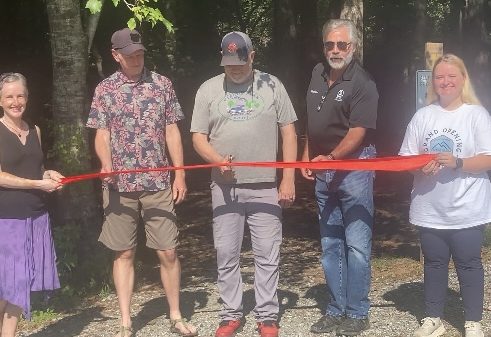Conservation Corner: Connecting with our history through nature
Published 8:00 am Wednesday, December 5, 2018
I am hoping to tweak your curiosity with this Corner.
It has to do with rock walls, and the fact that there may be a lot of history hiding in the cracks of those rock.
As many of you know, Allen and I live in the woods near Saluda, with a driveway about 7/10th of a mile long.
When we purchased the property 40 years ago, I did some deed research to learn that someone had lived here in 1917. It changed hands in 1923 when a family purchased it for a pittance and then lived on the land until the ‘50s.
I’ve learned a good bit about the history of the folks who lived on the land — not from recorded documents, but from the rock walls instead.
Between the barn and the pasture, there are remnants of a rock wall, leading me to believe that there was a small home there long, long ago, before the age of bulldozers to build roads. The spring is right there, so it makes sense that’s where someone would choose to live.
Then there’s a rock wall, with BIG rocks, on the driveway below the barn. Because those rocks are so large, it makes sense that this part of the road was built, or widened, after the use of mechanical earth moving equipment.
We know that there was a one-room house near where the barn sits now, which later got moved up to our current house site. That’s when everything changed, thanks to bulldozers.
The knoll got leveled off to make it easier to farm, the creek was filled with rocks and rubble so the road was able to get over the creek, the existing house was constructed using materials brought in from outside, and the barn was built on top of the buried creek.
All of this history is told by what’s left of old rock walls. How much history have we lost because we simply have not been looking?
This spring, the parcel of land next to us was logged.
Long ago, a man named Reuben Fletcher owned the land. Mr. Fletcher owned many acres of land. He lived by himself, and he papered the walls of his one room cabin with copies of the New Yorker magazine.
Duke Power Company bought the land and his cabin during the Depression for $5 an acre; but, up until this summer, the rock walls that formed the foundation of that cabin told the history of that spot.
But the loggers must not have cared about that history; they made a big pile of rocks out of that foundation, and the history of Reuben Fletcher is now gone forever.
On the ridge behind our house is the rock foundation of the Jakie Cabin, a favorite hideout for local men to drink moonshine out of sight of their wives and children. A pile of rocks tells folks which trail leads to the cabin.
A couple of months ago, I wrote about an old woman named Renie who was raised in Saluda. When she came to Saluda to see the place where she had spent so much of her childhood, it was the rock walls that she most wanted to see. I’m wondering if those rock walls were Renie’s earthly connection place.
Do we identify with the man-made structures of our childhood, or is it that sense of place — the rocks, flowers, dirt, trees — that brings us the sense of connection, of home?
Across the railroad tracks from Renie’s childhood home is the abandoned neighborhood, where Saluda’s African-Americans used to live. Many of those foundations still survive, and beautiful old rock walls surround them. Those rock walls tell a story.
Every time I walk there, I look, and I learn. This may sound really flaky, but I feel a connection thanks to the rocks left behind.
What’s the point of all this talk about rock walls? It’s to remind you to look, and to imagine, and to feel a connection with those before us, and to feel the energy of being a part of history that is still with us.
Just look.





